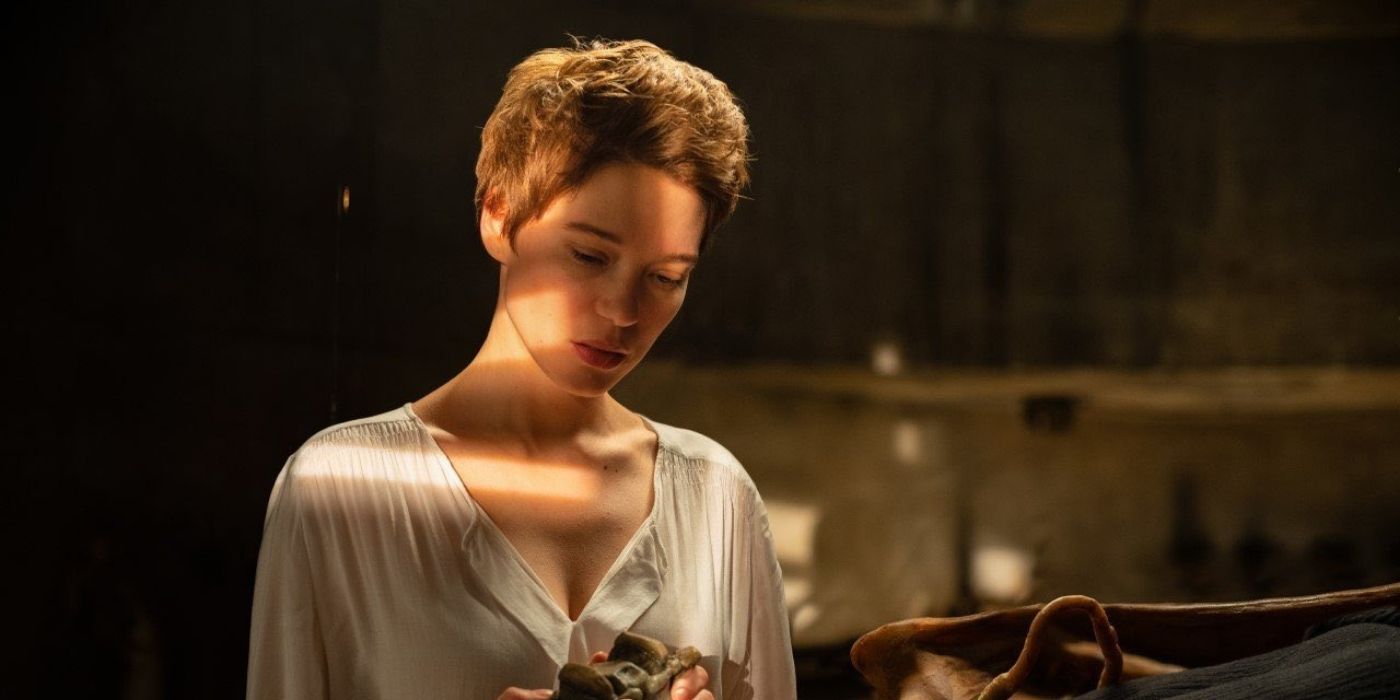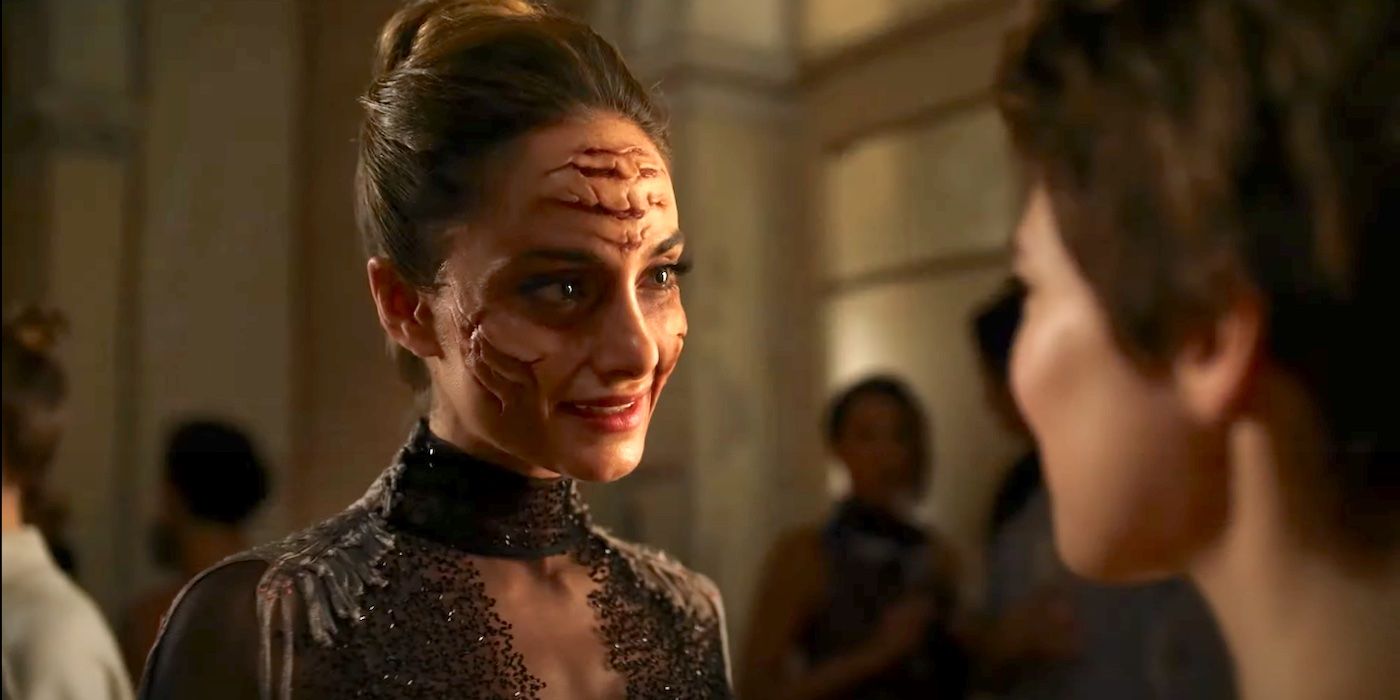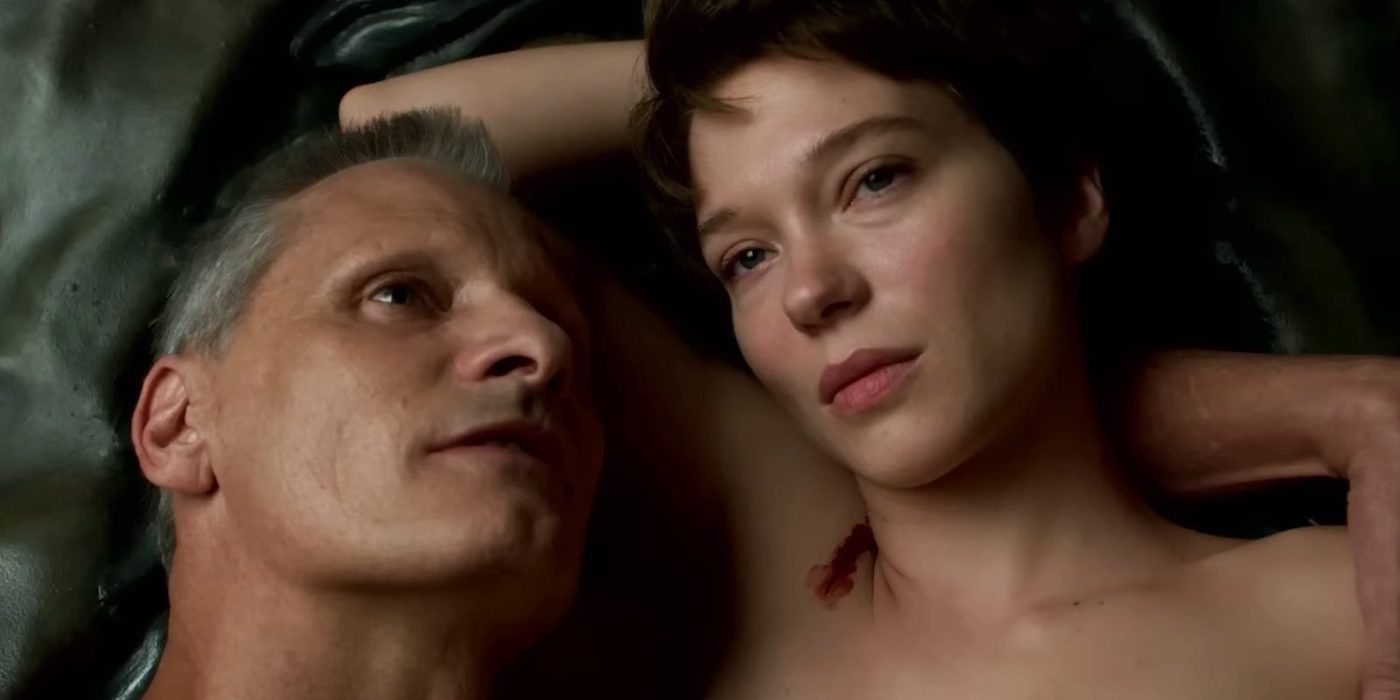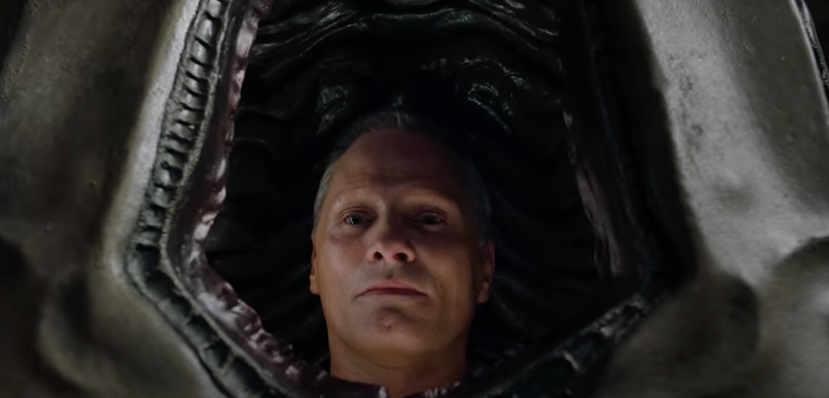Editor's note: The below piece contains spoilers for Crimes of the Future.Crimes of the Future, the new feature film from David Cronenberg that is his first in nearly a decade, is many things. It is a grim yet oddly funny portrait of a future that feels both utopian and dystopian as there have been incredible advancements in technology while everything else seems to be in decay. It is a unique look at body horror where people begin to grow unnecessary organs that they then remove, often as part of a performance that they do for rapturous audiences. It also comes across as both dense and didactic, laying out ideas with extended conversations that offer glimpses of its fraught search for meaning.
It is all part of the film’s reflection on identity, the metaphysical, and our own macabre pleasures. It is a work that sees Cronenberg at his most pure as well as his most enigmatic. If you have found yourself here, you likely have some questions. However, in the event you haven’t yet seen the film, best beware as this piece is going to be a deep dive into all that takes place up until the final striking moments. If you want to remain unspoiled, bookmark this and come back later as this is going to reveal everything. So lay back on your OrchidBed, plug in your organs, and open your mind wide for Daddy Cronenberg to hit us with all his ideas.
First, we must understand the trajectory of the story. The film begins with a shot of a young boy (Sozos Sotiris) on a beach where a giant boat has been flipped on its side, seemingly a state it has been in for a long while. The boy, who we will come to know as Brecken, is digging through the rocky embankment and seemingly enjoying himself in his task. However, his mother warns him from afar not to eat any of what he is collecting. Silently, the boy picks up his supplies and goes back to a nearby house. Later, we see him washing up in the bathroom only to then begin taking bites out of a plastic wastebasket. He does so with a deliberate and unrushed demeanor, continuing to eat as his mother watches on. Brecken then goes to sleep where he seems to rest peacefully and without worry, unaware of the danger that is coming.
His mother, Lihi Kornowski’s Djuna, stands over him and makes a decision. She grabs a pillow and begins to smother him, ignoring his final convulsions until he lays still. She then proceeds to make a call to alert Brecken’s father that she has killed their son, saying that she will leave the body there though she will be gone. Sure enough, when Scott Speedman’s Lang arrives at the house a while later, she has vanished without a trace. He proceeds to enter the house and discovers Brecken’s now lifeless body, lying exactly where she left him when she made her escape. Lang breaks down at the sight of his departed son, devastated by both the loss and what it represents for his purpose in life. We don’t know it yet, but Brecken has taken on a significance in this world that has the potential to upend everything.
The next scene introduces us to Viggo Mortensen’s Saul Tenser as he wakes up in what is known as an OrchiBed, an amazing technology that is designed to adapt to his body’s every need. He talks with Léa Seydoux’s Caprice, his partner and artistic collaborator with whom he performs, before having breakfast in a chair that helps him digest what is essentially multicolored mush. This is something he seems accustomed to even as he groans and coughs throughout much of the film. You see, Saul has a bit of a gift that enables him to grow new organs that Caprice then removes for the entertainment of live audiences. Labeled as "Accelerated Evolution Syndrome," it is something that others have developed the ability to do though Saul is the most famous of them all in this world where pain no longer seems to exist. With notoriety comes scrutiny from a shadowy organization known as the National Organ Registry which maintains a persistent bureaucratic yet bizarre presence.
It is run by the odd duo of Don McKellar’s Wippet and Kristen Stewart’s Timlin, both of whom seem enamored with Saul as an artist as well as a medical miracle. They later attend one of his many performances, the centerpiece of the story that also expands outward into the real meat of its thematic intentions. As the film grapples with how this organization is becoming increasingly ominous, Saul starts to ponder his own identity and purpose in his life as well as his art. He believes that he will die if he lets his organs continue to grow, or cook as he calls it, as they are not natural to let linger for too long. Yet we see him begin to put off doing any further performances, seemingly waiting to see what will happen if he tests out his own potential for change. This will be integral to understanding the film’s conclusion.
On this journey of self-discovery, Saul has several meetings with Detective Cope (Welket Bungué) for whom he appears to be an informant. However, the performer begins to question everything he has been told. Central to this is when he meets Lang on many of his nighttime walks through the streets. The bereaved father tries to convince Saul to perform an autopsy on the body of Brecken for an audience, something that both he and Caprice initially seem reluctant to do. Yet when Lang tells them of how his son had naturally developed organs that gave him the ability to consume plastic, a trait he inherited after it had been synthetically created in his father, they decide to go ahead with it. Instead of being the miracle that Lang and the growing commune of plastic eaters hope it will be, the performance reveals nothing of the sort. Saul later learns that this was a coverup, something that was done to prevent people from learning the truth. To further tie up any loose ends, Lang is brutally killed.
This all brings us to the final scene with Saul and Caprice. They are now both alone sometime later after the performance as they come to a shared understanding of what to do next. As Saul struggles to eat in his chair once again, Caprice grabs one of the many plastic bars that had been seen throughout the film. It could spell death for him if he eats it and isn’t able to digest it, though he decides to try anyway. Caprice grabs a camera, a device that is worn as a ring, and captures the moment of him eating it for the first time. Now shot in black and white, we see Saul become seemingly overwhelmed with emotion as he consumes the plastic. In a close-up on his face, he sheds a single tear as he has found harmony with himself and discovered that the changes within him were not a death sentence. The film then ends with this final shot, the impact of this transformative revelation leaving its mark on Saul.
As for what this all means, it should be first acknowledged that such a scene invites skepticism about its significance and sincerity. Throughout the film, Cronenberg has expressed an interest in the way artists perform as a key through line. It is therefore notable that this final scene introduces a camera that exists diegetically or within the world of the story. This makes the finale itself part of his ongoing avant-garde performance. His art is certainly a part of himself and an extension of his motivations, though it is hard to shake the feeling that this is all rather heavily managed. Both Saul and Caprice have always been focused on every detail of their art, so why would this not just be yet another part of that? The fact that they are creating it for a potential audience changes the dynamic as it is no longer just for them. Saul is now, whether he is fully aware of it or not, putting on yet another show. Even in his most seemingly personal moment of the film, the fact that he is playing to a camera makes his final emotion more complicated as it toes a fine line of authenticity.
However, regardless of whether the tear is sincere, the moment says something about where Saul has arrived at. He seems to truly believe in the cause that the now-dead Lang believed in till his last breath. He took a leap of faith in consuming the plastic and turning it into a video that could be shared with others. While the autopsy failed in providing the statement that Lang had hoped for, it feels like this video could easily fill that void. Thus, the personal becomes intertwined with the political as Saul puts himself on display for consumption just as he consumes something that carries great meaning.
This search for meaning in both art and life was an element of the film that was repeated several times, making it rather explicit that this moment is where the characters seem to actually discover it. The tear very well could be genuine, a moment where Saul is overwhelmed at the discovery that has implications for himself as well as his work. For the first time, he is at peace with himself and no longer fighting his body’s development. It was just as Lang told him he should do, a new challenge that he has now embraced. In doing so, the film redefines the concept of the self both literally and metaphorically as it gives in to the inevitability of transformation.




